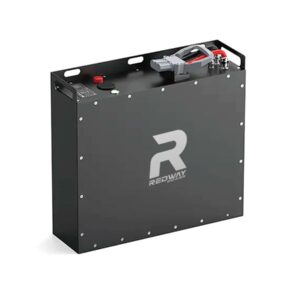What are some safety considerations when working with high voltage batteries?
Safety considerations when working with high-voltage batteries prioritize preventing electrical shock, thermal runaway, and chemical exposure. Critical measures include using insulated tools, wearing PPE (arc-flash gear, dielectric gloves), and maintaining dry work environments. Battery management systems (BMS) must monitor voltage imbalances and temperature spikes. Always de-energize systems before maintenance and adhere to lockout-tagout protocols. Thermal runaway prevention requires avoiding overcharging, physical damage, and improper storage temperatures above 45°C.
Optimal Forklift Battery Installation and Maintenance
Why is electrical insulation crucial for high-voltage battery safety?
Electrical insulation prevents accidental current leakage and arc flashes during maintenance. High-voltage systems (≥60V DC) can penetrate human skin resistance, causing lethal shocks. Pro Tip: Use Class 0 insulated tools rated for 1,000V+ and test gloves annually per ASTM D120 standards.

Beyond voltage thresholds, insulation degradation from moisture or physical wear increases risks. For example, a cracked battery terminal guard might expose 72V busbars, creating a 30 cm arc flash hazard. Transitional layers like epoxy-coated terminals and dielectric grease on connectors add redundancy. Always verify insulation resistance (IR) with megohmmeters—values below 1 MΩ indicate compromised barriers needing immediate replacement.
How does thermal management prevent battery hazards?
Effective thermal management controls exothermic reactions and cell degradation. Lithium-ion batteries generate 250–300 W/kg during rapid discharge, requiring active cooling below 40°C.
Liquid cooling plates or phase-change materials absorb heat, but what if airflow is obstructed? Blocked vents in a 100V EV battery pack can spike internal temperatures by 15°C/minute, triggering separator meltdowns. Pro Tip: Install redundant thermal sensors at cell interconnects and module junctions. Transitional strategies include pre-chilling batteries before fast charging and maintaining 20–80% SOC to reduce joule heating. Consider nickel-based thermal fuses that disconnect circuits at 85°C—a critical failsafe against cascading failures.
| Cooling Method | Efficiency | Cost |
|---|---|---|
| Air Cooling | Moderate | $ Low |
| Liquid Cooling | High | $$$ |
| Phase Change | Peak Load | $$ |
Battery Expert Insight
FAQs
Can I repair damaged high-voltage battery cells?
No—damaged cells risk internal short circuits. Replace entire modules following OEM guidelines to maintain voltage balance and BMS calibration.
What fire extinguisher type works for battery fires?
Use Class D (lithium) or Aqueous Vermiculite Dispersion (AVD) agents. Water exacerbates lithium fires, while CO₂ lacks cooling capacity for thermal runaway.
